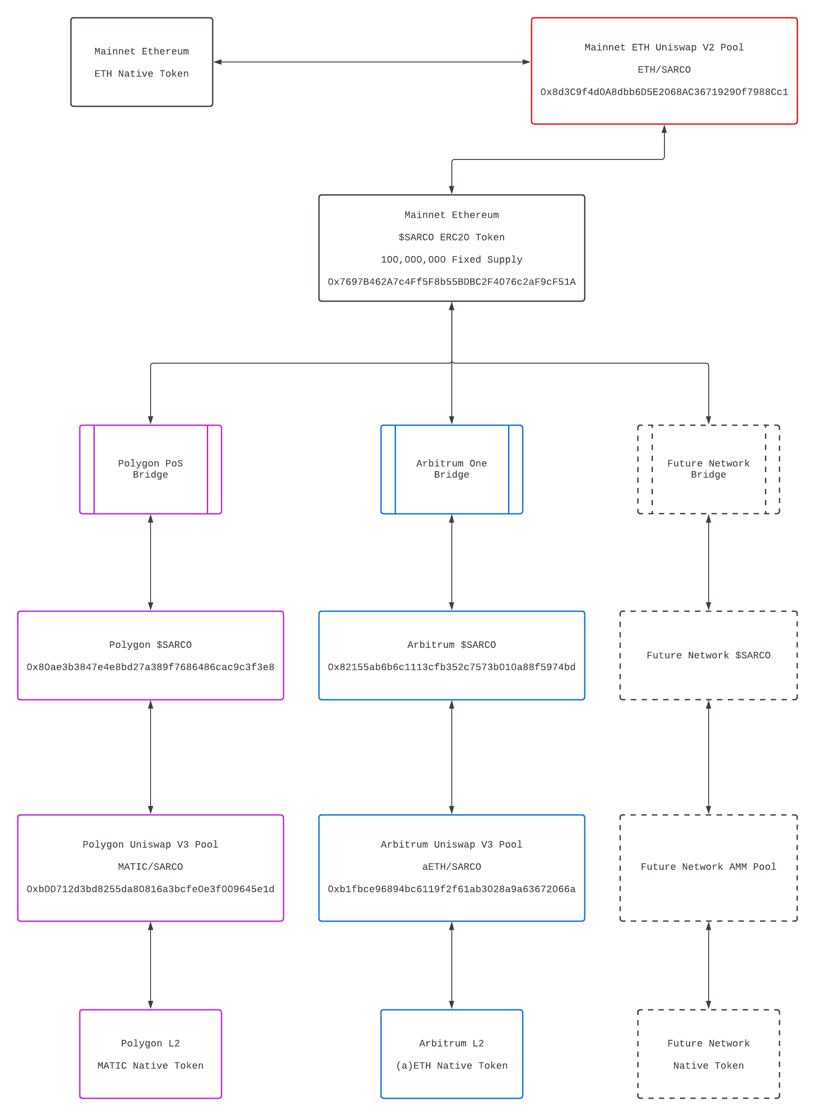Omnichain Token Model
From the very beginning, the architecture of Sarcophagus designed to allow the network to be operated on many blockchains simultaneously. While the Ethereum mainnet was chosen as the launch chain, DAO chain, and the network to which the game theory and value model compiles down to, the Sarcophagus application was designed to expand to any other blockchain that will allow token bridging to/from Ethereum.
Recently with the launch of Sarcophagus on Polygon, we have been able to prove that the model works, and now the team is working on rapidly expanding dead man's switch functionality to other EVM compatible networks. A few important notes about the Sarcophagus omnichain expansion:
- No new tokens have been created or minted, the supply is exactly the same and still capped at 100m.
- Ethereum mainnet remains the core network.
- Nodes are able to choose which network(s) they operate on.
- Nodes must bond using the $SARCO token on each chain they operate on, there is no cross-chain bonding.
- Nodes are compensated for their services in the $SARCO token of the chain they are operating on, there are no cross-chain payments.
- Only native bridges are recommended, check the Tokens page in the documentation to confirm target token addresses when bridging.
Users of the Sarcophagus dApp are able to choose which network they would like to create their dead man's switch on to match their security and familiarity profile. It is our goal to make it cheap and easy for as many users to gain the utility that Sarcophagus can provide regardless of the networks they are using. Users will also be happy to know that the dApp now supports auto-swapping of native chain tokens to the $SARCO token that is consumed by the app via 0x, meaning they will not have to acquire the token prior to using the application.
See below for a visual representation of token flows within the Sarcophagus protocol operating on multiple chains:

